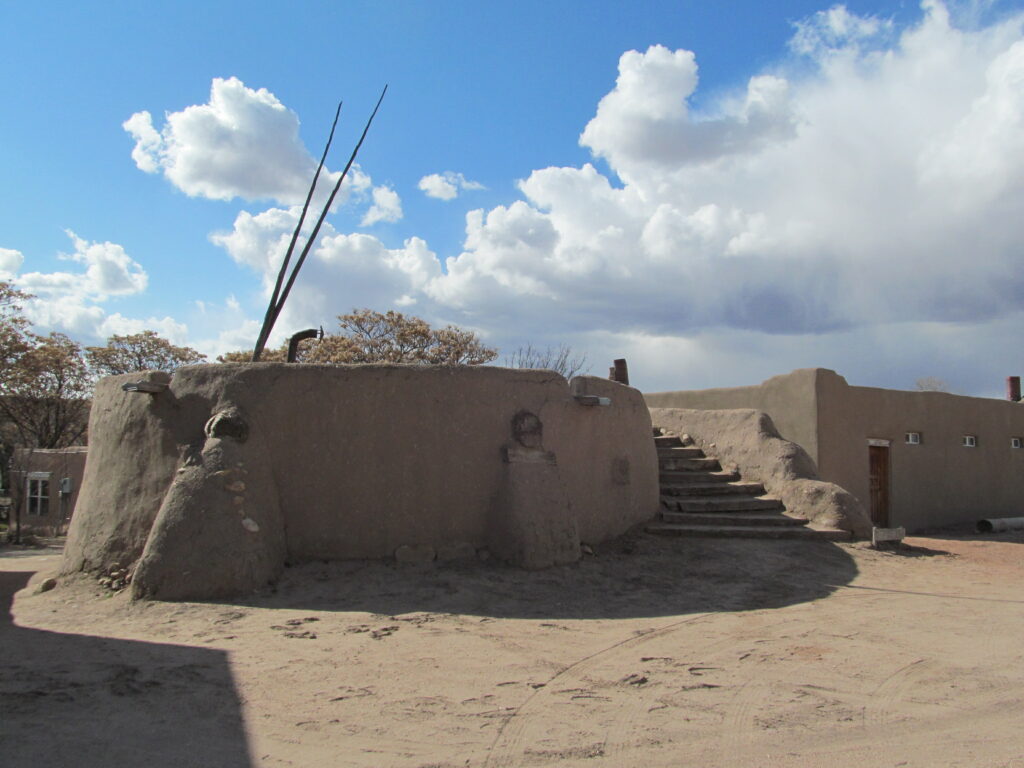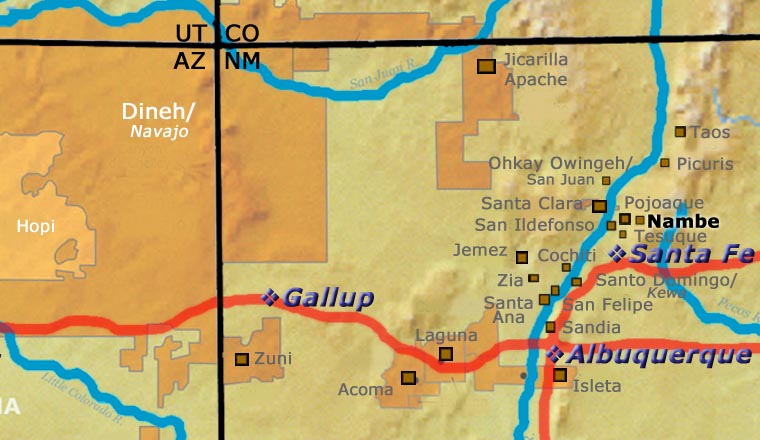About Nambé Pueblo

Nambé Pueblo was settled in the early 1300s when a group of Ancestral Puebloans (Anasazi) made their way from what is now the Bandelier National Monument area closer to the Rio Grande in search of more reliable water sources and more arable land.
At first they settled mostly high in the mountains, coming down to the river valleys in the summer to grow crops. Eventually, they felt safe enough to stay in the valleys and slowly abandoned the high mountain villages.
When the Spanish first arrived, Nambé was a primary economic, cultural and religious center for the area. That attracted a large Spanish presence and the nature of that presence caused the Nambé people to join wholeheartedly in the Pueblo Revolt of 1680 to throw out the Spanish oppressors.
When the Spanish returned in 1692, their rule was significantly less harsh. However, the Spanish brought horses into the New World and as the number of Spanish increased, so did the number of horses. That brought more and more raids from the Comanches as they came for horses and whatever else they could carry away. The Comanches were finally subdued by Governor Juan Bautista de Anza in 1776 but by then, the impact of European diseases was being strongly felt. A smallpox epidemic in the late 1820s virtually ended the making of pottery at Nambé.

Photo courtesy of John Phelan, Creative Commons Attribution-Share Alike 3.0 Unported License
About the Pottery of Nambé Pueblo
The Nambé Pueblo pottery tradition is similar to that of Taos and Picuris Pueblos in their use of micaceous clay slips but Nambé potters also used to produce white-on-red and black-on-black products. When Lonnie Vigil began producing his micaceous clay masterpieces about 25 years ago, he almost single-handedly jump-started the revival of pottery making in the pueblo.
These days, virtually every piece of pottery made at Nambé is slipped with micaceous clay before being fired. The only question then is: black, golden or a mix? That's dependent on how you build the fire and how windy it is when you light it.
Today there are a few potters making micaceous pottery at Nambé and while the general quality level is quite high, the production level is low.
Our Info Resources
Some of the above info is drawn from personal contacts with the potter and/or family members, old newspaper and magazine clippings, and through interminable searches of the Internet and cross-examination of any results returned.
Some has been gleaned from Duane Anderson's All That Glitters: The Emergence of Native American Micaceous Art Pottery in Northern New Mexico, School of American Research Press, Santa Fe, New Mexico, 1999.
Data is also checked against the Heard Museum's Native American Artists Resource Collection Online.
If you have any corrections or additional info for us to consider, please send it to: info@andreafisherpottery.com.